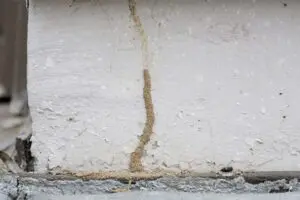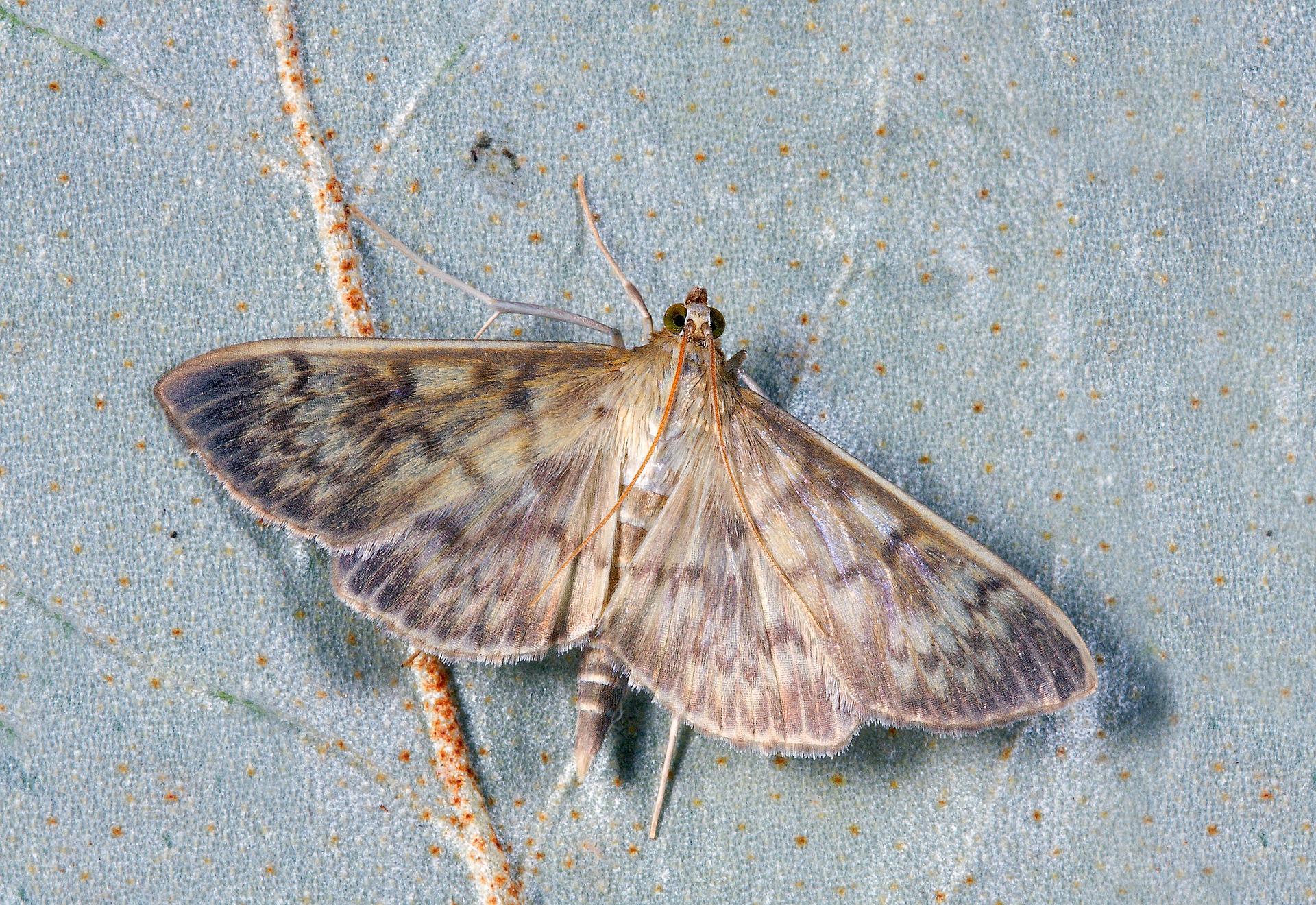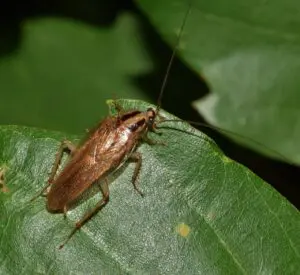

What are Pantry Moths?
Pantry moths are common household insects that are known to infest stored food products.
These pesky pests belong to the family Pyralidae and are notorious for causing damage to pantry items in homes, restaurants and grocery stores. But what causes pantry moths to infest?
Before we take a look at what causes pantry moths and how to get rid of pantry moths, it's important we understand these creatures a bit more.
Pantry moths usually lay their eggs in food products such as flour, grains, cereal, dried fruits, chocolate, and even pet food. Once these eggs hatch, the pantry moth larvae emerge and feed incessantly on the stored food which leads to contamination with their silk webbing and excrement - posing significant health risks if consumed.
These insects are also highly adaptable and thrive in various environments, making them a nuisance for homeowners
Identifying Pantry Moths
If you want to learn how to get rid of pantry moths forever, it is important that you are able to identify common pantry moth species. Gaining greater insight into their characteristics is vital for how to eliminate pantry moths from your home and kitchen.
Below are some of the most prevalent pantry moth species and their distinguishing features:
- Indian Meal Moth (Plodia Interpunctella): Indian meal moths are the most common pantry moth species. Indian Meal Moth adults have a wingspan of about 3/4 to 1 inch and are easily recognizable by their distinctive coloration. Their forewings are reddish-brown with a coppery glow, while the back wings are a pale gray. Indian meal pantry moth larvae are creamy-white with a brown head capsule.
- Mediterranean Flour Moth (Ephestia Kuehniella): Mediterranean flour moths are similar to Indian Meal Moths and have a wingspan of approximately 1/2 to 3/4 inch. Their front wings are pale gray with dark wavy lines, while the back wings are a pale gray or cream-color. Their larvae are yellowish-white and have a brown head.
- Angoumois Grain Moth (Sitotroga Cerealella): Angoumois grain moths are smaller than the abovementioned pantry moths and have a wingspan of about 1/4 to 3/8 inch. They have a golden and yellow front wing that has a few dark spots and pale back wings. Larvae are small, white, and cylindrical.
By learning about these common pantry moth species and their characteristics, you will be better able to identify and address pantry moth infestations in your home, protecting your food items from any damage and contamination.
Why We Don't Want Pantry Moths?
You're probably wondering “are pantry moths bad for your health?” Well, pantry moths pose several risks to both our health and surrounding environment. Here's why pantry moths are unwelcome visitors:
Negative Impact on Health:
- Pantry moths lay their eggs in stored food products, leading to contamination with pantry moth larvae, silk webbing, and fecal matter. Eating this contaminated food can result in foodborne diseases as well as gastrointestinal issues.
- Some people may also develop an allergic reaction to pantry moth larvae or their fecal matter, leading to symptoms such as skin irritation, respiratory problems, and allergic rhinitis. This is why it is important we learn how to get rid of pantry moths.
Environmental Impact:
- Pantry moth infestation can lead to significant financial loss due to the need to throw out contaminated food and potential damage to structures and furnishings.
- When introduced into new environments, pantry moths can disturb local ecosystems by driving out native species or serving as vectors for illness.
Steps for Getting Rid of Pantry Moths
- Regularly Check Your Pantry: Inspect your pantry shelves, cabinets, and stored food items for signs of pantry moth infestation, such as larvae, silk webbing, or adult moths flying around.
- Dispose of Infested Foods: Promptly discard any infested or expired food items. Dispose of them outside the home to prevent further spread of the infestation.
- Clean Your Containers: Thoroughly clean and disinfect reusable containers that hold infested food items. This helps eliminate any remaining pantry moth eggs or larvae and prevents reinfestation. Consider using a mixture of hot water and soap or a diluted bleach solution for effective cleaning and sanitation.
- Clean Out Your Pantry/Cupboards: Vacuum and disinfect all pantry surfaces, paying special attention to corners and undersides of shelves where pantry moth eggs or larvae may hide.
- Deal with Shelf Liners: Dispose of paper-based shelf liners as they can harbor pantry moth eggs or larvae. Clean plastic liners thoroughly with soap and water to remove any traces of infestation.
- Use Natural Residual Pesticide: Consider applying natural residual spray made from ingredients such as essential oils or diatomaceous earth to provide ongoing protection against pantry moths.
- Replace Non-Infested Food: Transfer non-infested food items into airtight containers to prevent future infestations. Ensure that containers are securely sealed to keep pantry moths out.
- Set Up Traps: Deploy pantry moth traps in your pantry to monitor and trap adult moths. These traps can help reduce moth populations and serve as an early warning system for potential infestations.
- Be Vigilant: Emphasize the importance of regular pantry reviews, cleanliness, and ongoing use of traps to prevent pantry moth infestations. Encourage household members to stay vigilant and promptly address any signs of infestation to prevent the problem from escalating.
Preventing Pantry Moth Infestations:
Now that we know what causes pantry moths - it’s time to take preventative measures for pantry moth pest control.
Preventing pantry moth infestations involves implementing several key preventive measures:
- Use Sealed Containers: Store food items in airtight containers to prevent pantry moths from accessing them and laying eggs.
- Regular Cleaning: Regularly clean and vacuum pantry shelves and surfaces to remove food debris and potential hiding spots for pantry moth eggs and pantry moth larvae.
- Monitoring with Traps: Use pantry moth traps to monitor for adult moths and to help detect infestations at an early stage.
Implementing these preventive measures can significantly reduce the risk of pantry moth infestations and protect stored food items from contamination.
Conclusion:
Pantry moth infestations can be a persistent and frustrating problem for homeowners and offices, particularly pantry bugs in Florida. However, by taking proactive steps to prevent infestations, such as using sealed containers, regular cleaning, and monitoring, you can effectively protect your pantry from these unwanted pests.
For comprehensive pantry moth pest control services and expert assistance in managing pantry moth infestations, reach out to Excel Pest Services.
Our team of professionals is fully equipped with the knowledge and tools to help you effectively eliminate pantry moths and ensure a pest-free environment in your home and office. Don't let pantry moths take over your kitchen, contact Excel Pest Services today for a reliable solution and learn more about pest identification with our expert guides.
FAQs:
How to Use Moth Prevention Pantry Moth Traps?
Remove the trap from its packaging and place it in areas where pantry moths are likely to be present. As they are kitchen moths - place traps inside your pantry or near food storage areas. The traps should contain a pheromone that attracts adult pantry moths, which become stuck to the adhesive surface. Make sure to follow the manufacturer's instructions.
What home remedy kills pantry moths?
Several home remedies can help get rid of pantry moths and prevent infestations including, but not limited to:
- Cleaning pantry shelves and surfaces regularly to remove food debris and potential moth eggs.
- Using natural repellents such as bay leaves, cloves, or cedar chips.
- Freezing infested food items to kill any possible eggs or pantry moth larvae.
- Applying a mixture of vinegar and water to affected areas as a natural cleaning and disinfecting solution.
How do you find a moth nest?
To find a moth nest, carefully inspect areas where pantry moths are likely to hide, such as inside pantry shelves, cabinets, or stored food containers. Look for signs of moth activity, such as silk webbing, fecal matter, or adult moths flying around. Moth nests are typically located near a food source, so focus your search on areas where food items are stored.
Does vinegar kill pantry moths?
Vinegar can help deter pantry moths and clean infested areas, however it may not kill adult moths or their eggs and larvae.
Are pantry moths bad for your health?
Yes, as stated previously pantry moths pose significant health risks if consumed or if their feces come into contact with food. The larvae can contaminate stored food items with their silk webbing, fecal matter, and shed skins, leading to foodborne illnesses and gastrointestinal issues. Some individuals may also develop allergic reactions to pantry moth larvae or their byproducts. With this in mind it is vital to take preventive measures to control pantry moth infestations and protect your health.






